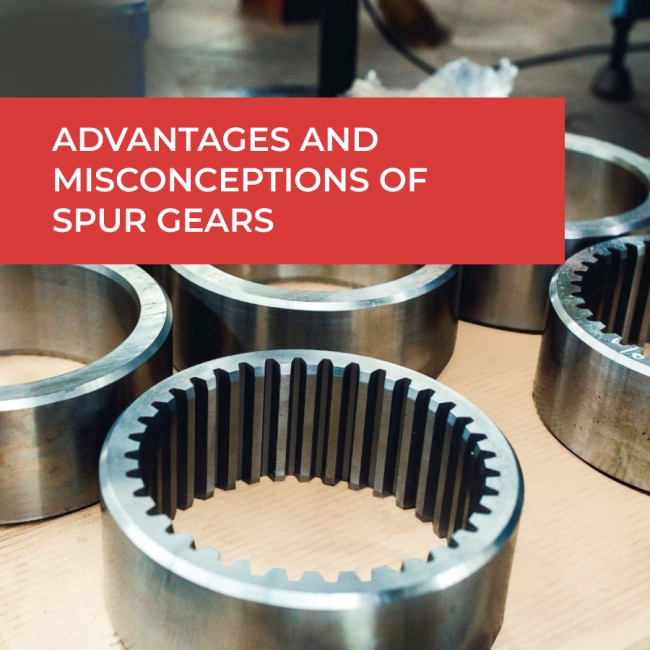Keep up to date with us on the latest industry news as well as what's going on at True Gear & Spline Ltd. We also post articles for insider tips and tricks, so make sure to check back frequently.
What Are Spur Gears And Where Are They Used?

Have you ever wondered what powers industries from behind the scenes with precision and efficiency? Do you know what keeps the wheels turning and enables machines to operate smoothly? The answer is gears. It is this small yet mighty mechanical component that facilitates effective torque transfer. While bevel, ground, worm, helical, and crown are all popular gear types, we discuss in this blog all you need to know about spur gears. In this blog, we address questions like what are spur gears and where are they used.
The Basic Design And Functionality Of Spur Gears
The design of the spur gear is among the simplest of all gears. It is easy for the uninformed to mistake the spur gear's simple design as ineffective. This is far from the truth. The simple yet increasingly effective design of this gear makes it immensely popular and highly sought after.
The simple design allows the spur gear to facilitate rotational motion between parallel shafts. The even space among each straight tooth is one of the most noticeable features of spur gear design. Spur gear has a cylindrical shape and the shafts are coplanar and parallel.
A seamless torque transfer is achieved when two spur gears mesh together. When two gears mesh, they create a positive drive system. This ensures an uninterrupted motion transfer that facilitates an uninterrupted power transmission between mechanical components.
Did you know? The size and number of teeth determine the speed ratio of spur gears. This is because a gear with a larger dimension and with more teeth will rotate relatively slowly. At the same time, they will also generate more torque than spur gear with lesser dimension and smaller teet.
Types of Spur Gears and Their Applications
Spur gear can be further classified into two significant types, external and internal. The significant difference between both types is that external gears have teeth cut on the outer surface of the cylinder while internal gears have on the inside.
When two external gears mesh together, they rotate in opposite directions to offer torque transmission. However, it is important to note that two internal gears cannot mesh together owing to their design specifications. A smaller external gear usually sits inside the internal gear to facilitate torque transmission. The smaller external gear and the larger internal gear often rotate in the same direction.
Did you know? Internal spur gears often have a more intimate assembly as compared to external gears. This is due to the close positioning of shafts in internal gear assemblies.
Advantages of Using Spur Gears
Efficient Torque Transfer
The simple and effective design of spur gears facilitates effective torque transfer. The evenly spaced straight teeth mesh together perfectly. When two spur gears mesh, they interlock without leaving any gaps. This ensures that there is no slippage and that the machines don't come to a grinding halt. All these factors make spur gear apt for high-speed applications that demand precision.
Ease of Manufacturing
Gear manufacturers use a wide range of sophisticated techniques to produce custom gears. The design of spur gears is so simple that gear manufacturers can produce them with ease. An experienced gear manufacturer can produce custom spur gears of precise tolerances with a quick turnaround time.
Versatility
Spur gears are versatile in the sense that they offer speed variations. By adjusting the teeth count, you can achieve different rotational speeds. You can get a custom spur gear with more teeth if you want more rotational speed or vice versa. This versatility makes spur gears ideal for a wide range of industries such as automotive, industrial machinery, robotics, and even household appliances.
Common Misconceptions About Spur Gears
As with anything that's in demand, there are a lot of misconceptions about spur gears as well. The biggest misconception about spur gears is that they are only suitable for low-speed applications. It is simply not true. The reality is that spur gears excel in high-torque, low-speed applications. This doesn't mean that they are useless for applications that demand low torque and high speed. Modern gear manufacturing techniques have made it possible to use spur gears in all applications. Accurate design and material selection is the key to manufacturing versatile gears. The right material ensures that gears work well in high-speed applications without compromising efficiency and durability.
Another misconception is that spur gears are loud and produce excessive noise during operation. While it's true that gear noise can occur if the teeth mesh improperly or if the gear set lacks proper lubrication, this issue can be mitigated through careful design and maintenance practices. By utilizing precision manufacturing techniques and selecting appropriate lubricants, the noise level of spur gears can be significantly reduced.
Conclusion
As we have seen in this blog, spur gears are an inextricable part of the industrial world. The versatility along with the simple design of spur gears make them highly effective. True Gear & Spline Ltd. is a leading manufacturer of custom spur gears in Ontario. We use top-notch tools and machines to ensure gear manufacturing with precise tolerances. Our quality checks ensure that none of our gears leave the floor with any flaws. We also offer gear shaping, gear hobbing, and CNC machining services to our clients. Consult us today to get a free quote.








